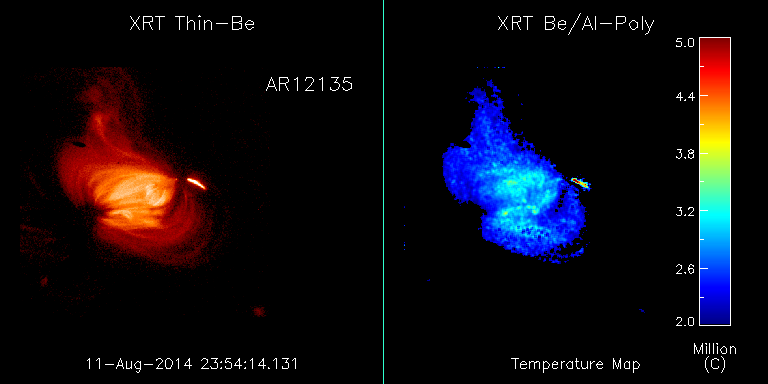
A Pretty Cool Flare
|
When AR12135 rotated onto the solar disk, it appeared to be an emerging active region and Hinode scientists hoped it would produce some large flares. But, soon after it emerged, it settled into a simple magnetic configuration that wasn't likely to flare. With little solar activity, Hinode tracked this region for almost a week and XRT saw several micro-flares. Most of these events were short lived with several flares popping off in succession. An example of such a brightening can be seen in this Thin-be image (left image). A small bright line is seen sticking out to the right of the active region, away from the other loops. Every 12 minutes, XRT took a pair of images in the Al-poly and Thin-Be filters. The filter ratio method was applied to the image pair to create a temperature map. The right image is the temperature map for this image pair. As you can see, the active region was a cool 2 to 3 million degrees but the micro-flare reached temperatures of at least 5 million degrees. This bright loop only appeared in a single Al-poly and Thin-be pair so it's impossible to determine if this is the hottest temperature the flare achieved. Flares can reach temperatures of up to 20 million degrees with many achieving temperatures around 10 million degrees. Keywords: Microflares, Temperature Structure Filters: Thin_be, Al_poly |
(Prepared by Patricia Jibben)
| Back | Archive | Next |